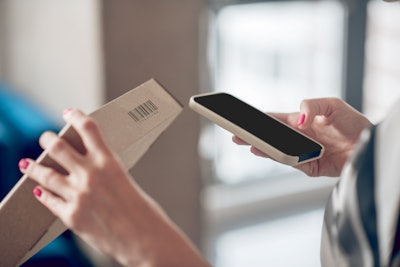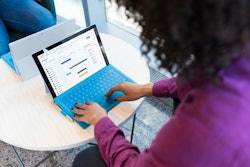
For decades now, the good old-fashioned black-and-white one-dimensional (1D) barcode, also known as a traditional barcode, has remained a staple for CPG companies and Retailers to enhance efficiencies around inventory management. In today’s world, however, where supply chain processes have become more intricate and nuanced than ever before, 1D barcodes are no longer meeting all of the complexities of modern-day demands like ensuring transparency and accountability. Two-dimensional (2D) barcodes, like QR Codes, have emerged as a powerful solution that answers many of these supply chain woes. They pack a far more powerful punch than 1D barcodes ever could—and they’re changing the way supply chains operate globally.
As CPG and Retail sectors began to grow in the 1950s, 1D barcodes were created to help streamline inventory management. Ever since their early adoption, traditional barcodes have served as a fundamental tool for these businesses around the world. And more recently, brands have started to recognize their potential to build deeper connections with consumers beyond the box. One way to provide the ultimate customer experience is by making sure as a business that your packaging and delivery efforts, as well as your products, answer the needs of your customers. Key technologies like 2D barcodes come into play for these opportunities as they can help provide richer data to improve supply chain efficiency while providing eco-conscious consumers with information they demand such as product sourcing and sustainability.
Now with barcodes being used by over two million manufacturers on more than four trillion product items per year, GS1 US, a member of the GS1 Global not-for-profit organization that develops and maintains global standards for barcodes, expects that 2D barcodes will become an increasingly important solution for CPG Companies and Retailers around the world by 2027.
2D barcodes can store incredible amounts of information (7,089 characters in comparison to traditional barcodes 20-25 characters) in a compact space that fits onto packages. These barcodes represent a shift in the way businesses can manage operations while creating better connections with their customers.
For example, imagine a package of perishable products traveling on a truck to its destination at a grocery store. With traditional barcodes, tracking and monitoring is highly limited, which leaves room for error and uncertainty like delivering spoiled goods and disrupting a consumer's expectations of the product that they are being delivered. Now, think about the same scenario with 2D barcodes. Once 2D barcodes are implemented across products for improved tracking capabilities, by scanning these barcodes, logistics teams can access more granular data about a product’s expiration date or batch codes. This gives every business enhanced traceability and accountability for the products they are shipping.
More granular data means that a safer product is delivered to customers while keeping both the supplier and the customer informed. 2D barcodes open a new sense of security and transparency for suppliers ensuring the integrity of the goods that are being delivered throughout their journeys. They can also make stronger customer connections, creating an opportunity for more personalized experiences with better product authentication.
An important thing to note is that not all 2D barcodes are created equal. A 2D barcode that leverages GS1 Standards and a GS1 Digital Link offers more capability beyond linking to a specific URL for marketing purposes. Expanded, brand authorized information can be embedded for consumers and supply chain stakeholders because a 2D barcode has more robust data capacity – plus it can scan at POS. If individual supply chain operators can add more 2D barcodes to their products, there is a profound opportunity to create more efficient inventory management practices, enhnace order fulfillment logistics, and more. That means that companies can benefit from 2D barcodes’ ability to provide enhanced data and visibility into their order-to-delivery process including accurate verification of product descriptions, warehouse locations, product health, and more.
You might be wondering what steps you can start to take to integrate 2D barcodes into your supply chain. Here are some simple ways you can kick off the 2D Barcode implementation process:
- First, it's important to know what you're working with. Evaluate your current inventory tracking management system. Look for processes that could benefit from the additional data capacity and versatility offered by 2D barcodes. Consider piloting the use of 2D barcodes on a few small-scale product lines to test the technology in real-world scenarios.
- When every team member understands that valuable information can come from this change, you'll better empower them to gather insights and contribute to a more efficient supply chain. Survey your team members to see whether they are familiar with 2D barcodes and make sure that everyone understands the benefits they could have specifically on your business.
- It's important to engage with key stakeholders—like managers, warehouse staff, and IT professionals—to better understand their needs and questions around the implementation of 2D barcodes. From implementing the right scanners to updating inventory management software, collaborating with these stakeholders early can foster buy-in and ensure that the implementation process runs smoothly.
- When selecting a technology partner, prioritize trust, reliability, and interoperability. In addition to ensuring a partner can fulfill all your 2D barcode needs, including scalability and analytics, look for a platform with a robust technology ecosystem that can easily integrate with your current systems and workflows. Also, ensure they prioritize trust and safety by asking questions like, “Is there an existing anti-abuse system in place?” and “What kind of proprietary technologies have they built to keep their platform and users safe?”
We’re on the cusp of a new technological revolution. Businesses that take this opportunity to learn how to integrate this new solution into their operational processes will have a competitive edge in a continuously evolving landscape. Companies need to embrace 2D barcodes now.















